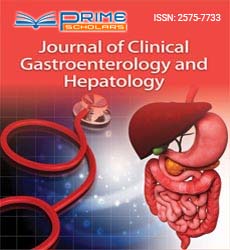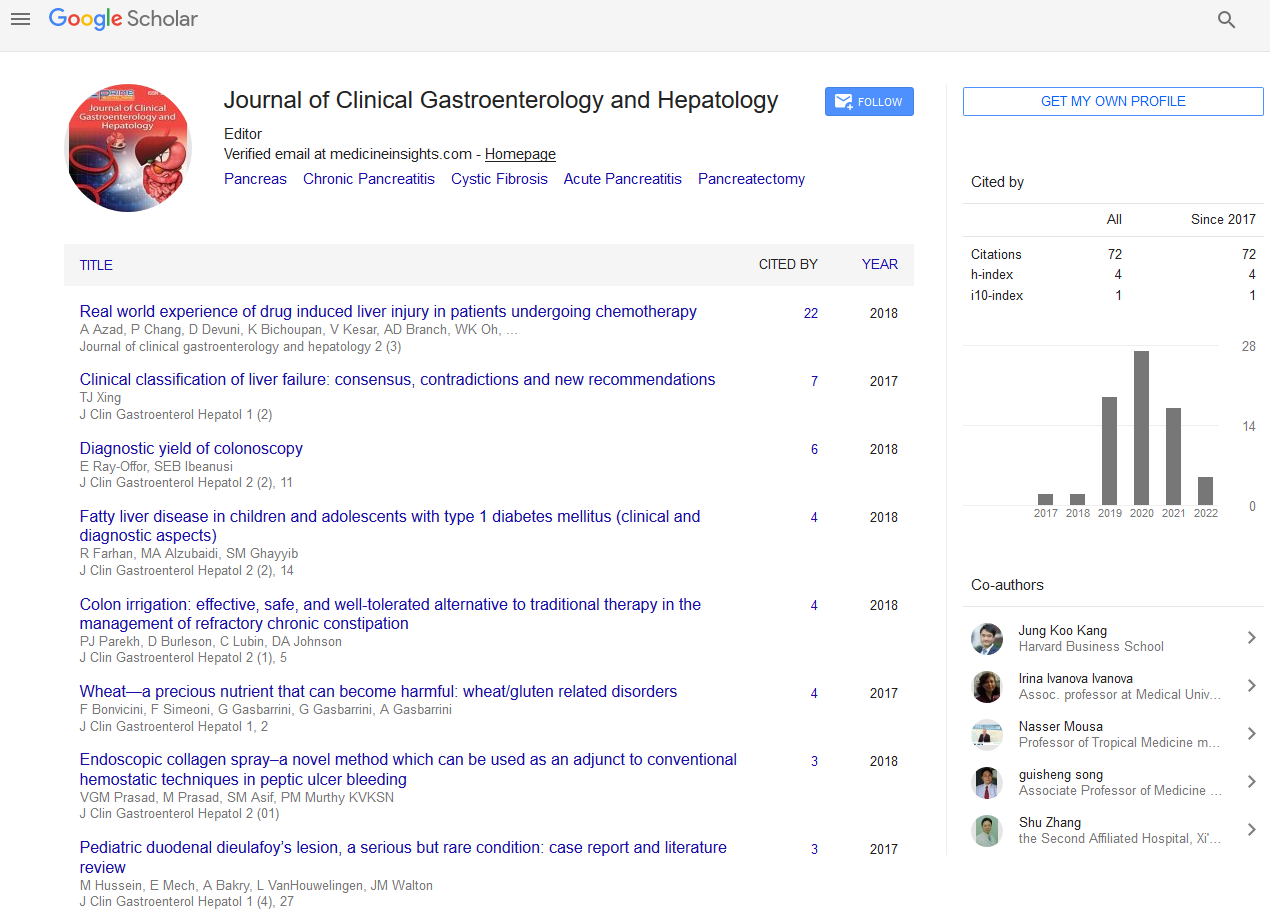Perspective - (2024) Volume 8, Issue 3
Exploring the Abdomen: Anatomy, Function, and Clinical Relevance
Seojun Jiwoo*
Department of Gastrohepatology, Renmin University, China
*Correspondence:
Seojun Jiwoo,
Department of Gastrohepatology, Renmin University,
China,
Email:
Received: 29-May-2024, Manuscript No. IPJCGH-24-20577;
Editor assigned: 31-May-2024, Pre QC No. IPJCGH-24-20577 (PQ);
Reviewed: 14-Jun-2024, QC No. IPJCGH-24-20577;
Revised: 19-Jun-2024, Manuscript No. IPJCGH-24-20577 (R);
Published:
26-Jun-2024, DOI: 10.36648/2575-7733.8.3.27
Introduction
The abdomen serves as a central hub of vital organs and
structures crucial for digestion, metabolism, and homeostasis.
Its intricate anatomy and dynamic physiological functions play
a pivotal role in maintaining overall health and well-being. This
theory aims to delve into the complexities of the abdomen,
elucidating its anatomical features, physiological processes,
and clinical significance in health and disease. The abdomen is
defined as the region between the thorax and pelvis, bordered
superiorly by the diaphragm and inferiorly by the pelvic inlet.
It encompasses multiple anatomical structures, including the
abdominal wall, abdominal cavity, and abdominal organs.
Description
The abdominal wall consists of several layers, including skin,
subcutaneous tissue, muscles external oblique, internal
oblique, transversus abdominis, rectus abdominis, and
fascia, providing support and protection to the underlying
structures. The abdominal cavity houses a diverse array of
organs, such as the stomach, liver, gallbladder, pancreas,
spleen, small intestine, large intestine, and kidneys, each
with specific functions vital for digestion, metabolism, and
waste elimination. The abdomen plays a pivotal role in several
physiological processes essential for maintaining homeostasis
and overall health. Digestion begins in the abdomen, where
food is broken down into nutrients through mechanical and
enzymatic processes initiated by the stomach, pancreas, and
small intestine. Absorption of nutrients occurs primarily in
the small intestine, facilitated by specialized epithelial cells
and an extensive network of blood vessels and lymphatics.
Metabolism of nutrients, including carbohydrates, proteins,
and lipids, takes place in the liver, which also detoxifies harmful
substances and synthesizes essential proteins. Waste products
are eliminated through the large intestine and kidneys,
ensuring proper excretory function and electrolyte balance.
Additionally, the abdomen houses vital organs involved in
immune surveillance and endocrine regulation pancreas,
contributing to overall health and well-being. Disorders
affecting the abdomen encompass a wide range of conditions,
including gastrointestinal, hepatobiliary, pancreatic, renal,
and reproductive disorders, each with unique presentations,
diagnostic considerations, and treatment approaches.
Gastrointestinal disorders, such as gastroesophageal reflux
disease peptic ulcer disease, inflammatory bowel disease and
colorectal cancer, manifest with symptoms such as abdominal
pain, bloating, diarrhea, constipation, and rectal bleeding.
Hepatobiliary disorders, including viral hepatitis, alcoholic
liver disease, cholelithiasis, and cirrhosis, may present with
jaundice, abdominal distension, ascites, and altered mental
status. Pancreatic disorders, such as pancreatitis and pancreatic
cancer, can cause severe abdominal pain, nausea, vomiting,
and weight loss. Renal disorders, including acute kidney injury,
chronic kidney disease, and urinary tract infections, may
manifest with flank pain, hematuria, and changes in urinary
output.
Conclusion
Reproductive disorders, such as ovarian cysts, endometriosis,
and testicular torsion, may present with pelvic pain,
menstrual irregularities, and infertility. Prompt recognition
and management of abdominal disorders are essential
for preventing complications, optimizing outcomes, and
preserving patient well-being. The abdomen serves as a critical
anatomical region housing vital organs and structures essential
for digestion, metabolism, and homeostasis. Understanding
its intricate anatomy, physiological functions, and clinical
relevance is essential for healthcare professionals to diagnose,
treat, and manage abdominal disorders effectively. Continued
research efforts aimed at elucidating the pathophysiology of
abdominal disorders and developing innovative diagnostic and
therapeutic approaches hold promise for further advancing
abdominal healthcare and improving patient outcomes.
Citation: Jiwoo S (2024) Exploring the Abdomen: Anatomy, Function, and Clinical Relevance. J Clin Gastroenterol Hepatol. 8:27.
Copyright: © 2024 Jiwoo S. This is an open-access article distributed under the terms of the Creative Commons Attribution
License, which permits unrestricted use, distribution, and reproduction in any medium, provided the original author and source
are credited.

